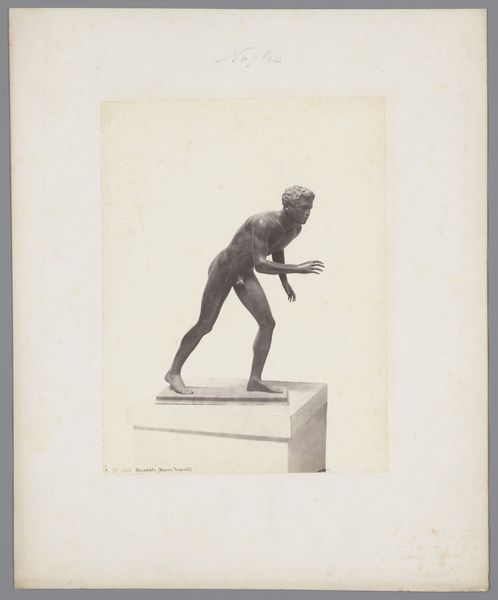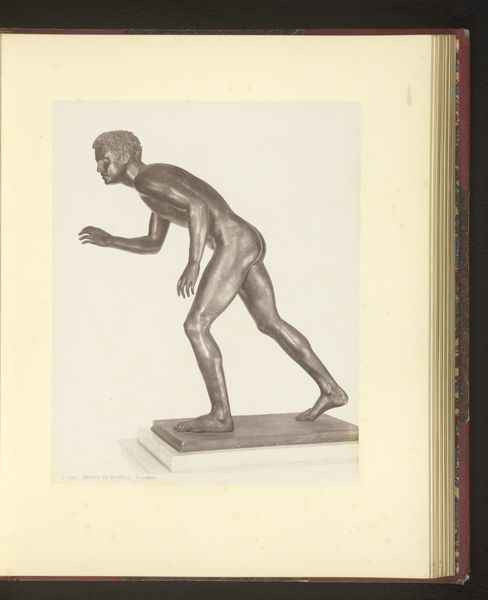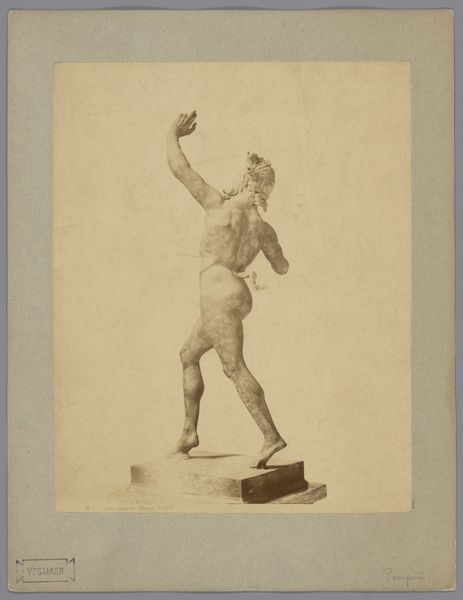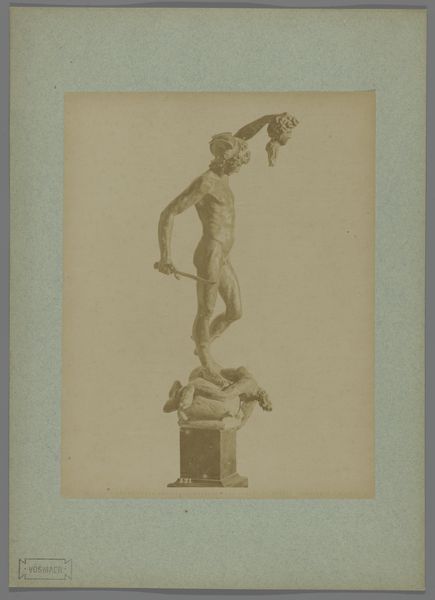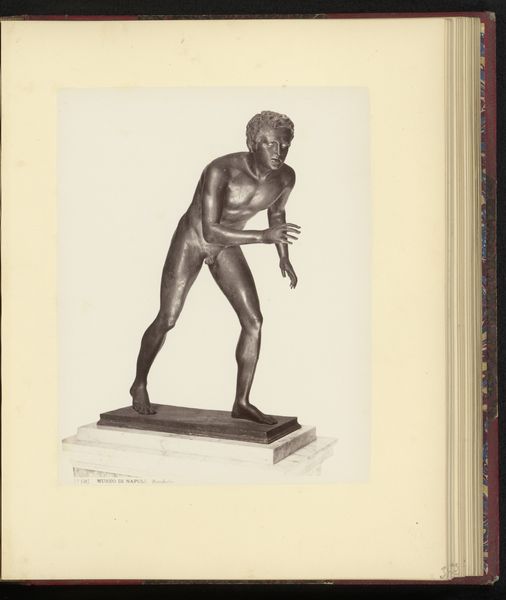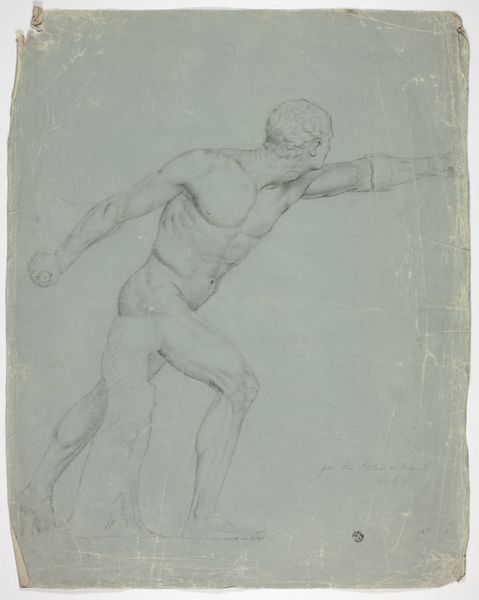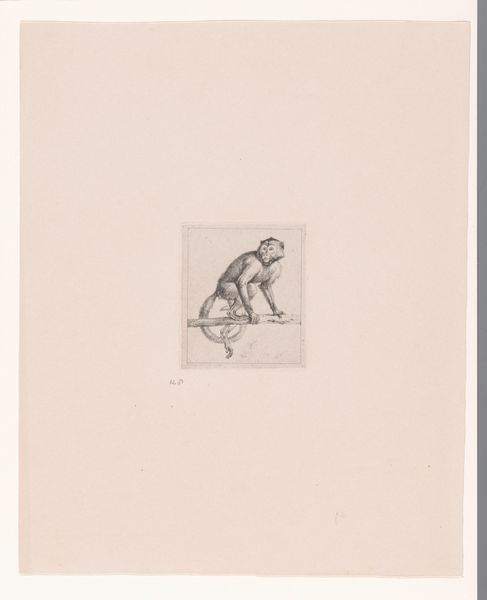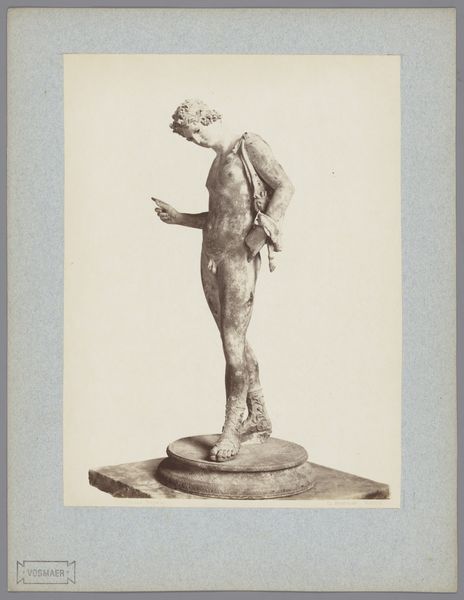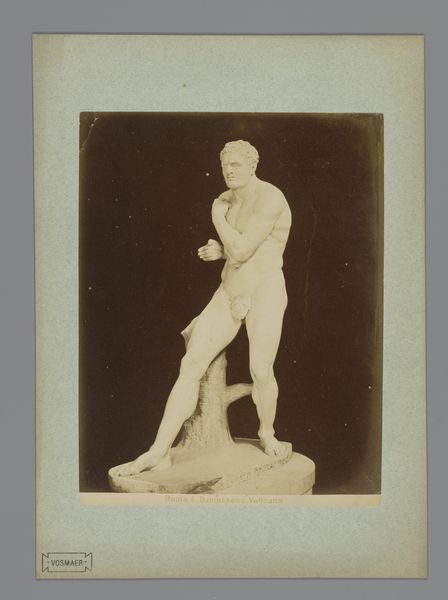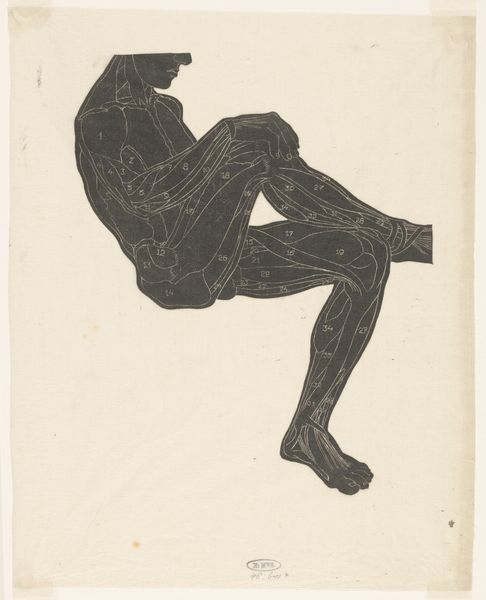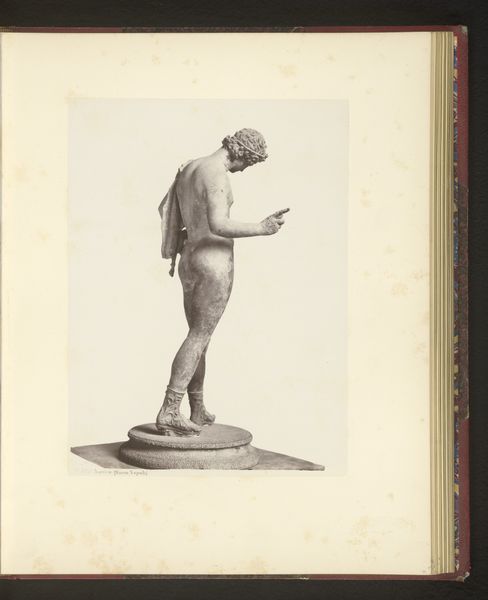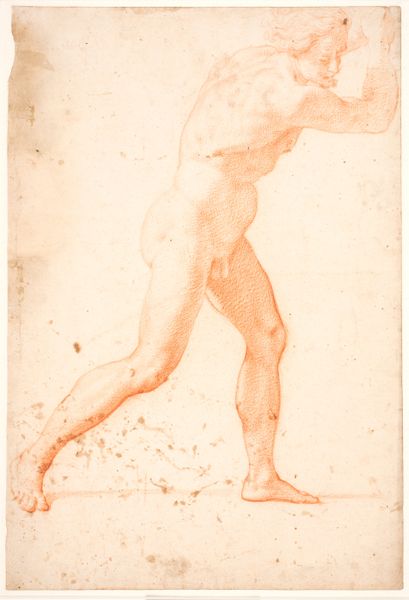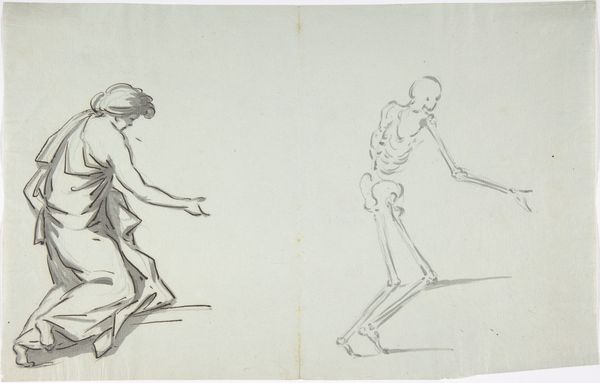
Sculptuur van een discuswerper in de Napolitaanse musea te Napels, Italië 1856 - 1914
0:00
0:00
giorgiosommer
Rijksmuseum
bronze, photography, sculpture, gelatin-silver-print
#
portrait
#
greek-and-roman-art
#
landscape
#
bronze
#
figuration
#
photography
#
sculpture
#
gelatin-silver-print
#
academic-art
Dimensions: height 379 mm, width 310 mm
Copyright: Rijks Museum: Open Domain
Editor: Here we have Giorgio Sommer's "Sculptuur van een discuswerper in de Napolitaanse musea te Napels, Italië," dating from around 1856 to 1914. It's a gelatin silver print depicting a bronze sculpture. I’m struck by the stark contrast between the smooth, idealized figure and the aged, textured paper. What do you see in this photograph, and the statue it portrays? Curator: It's a fascinating intersection, isn't it? We see Academic Art engaging with its historical roots, specifically Greek and Roman ideals. But it’s important to remember this wasn't a neutral revival. Consider the social context: During this period, these "classical" forms were often used to uphold notions of racial and cultural superiority. Sommer, by photographing this sculpture, participates in a dialogue – consciously or not – about who gets to claim ownership of history, of beauty, of the athletic ideal. Editor: So, you’re saying the photograph isn't just a neutral document, but an argument of sorts? Curator: Precisely! It prompts us to ask: Whose image of "perfection" is being perpetuated here? The male nude has a long, complicated history in art, often linked to power and dominance. Who was allowed to participate in athletics, and therefore be represented this way? Who was excluded? Think about the colonial project and the use of photography as a tool of documentation and control. How does this image fit into that narrative? Editor: That adds a layer of complexity I hadn't considered. It’s not just about appreciating the beauty of the sculpture, but also interrogating the power structures it reflects and reinforces. Curator: Exactly. By critically examining these historical representations, we can begin to dismantle the problematic legacies they carry. Hopefully, we can create a more inclusive and equitable understanding of art history. Editor: This makes me want to rethink my initial impression, considering its broader implications. Thanks!
Comments
No comments
Be the first to comment and join the conversation on the ultimate creative platform.
